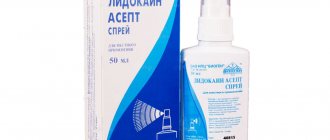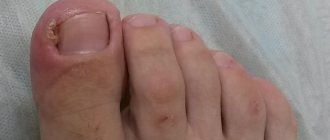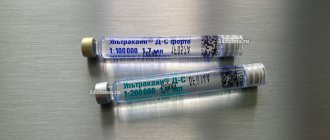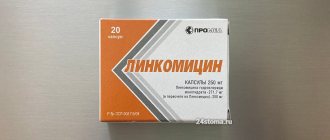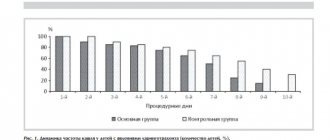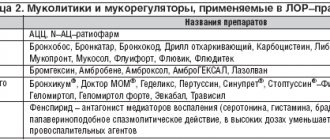Where is topical anesthesia used?
Most often it is used for pain relief when puncturing the skin during catheter insertion, injections, blood sampling, as well as in the following areas of medicine, such as:
- dentistry (for removing teeth and tartar, to relieve the gag reflex during procedures);
- surgery (for superficial surgical interventions. For example, when harvesting a flap for skin grafting, during mechanical cleaning of trophic ulcers);
- dermatology (for removal of molluscum contagiosum);
- cosmetology (before tattooing, hair removal, mesotherapy, laser therapy);
- gynecology (for removal of condylomas);
- pediatrics (for blood sampling, vaccinations).
Anesthesia in dentistry: types and principle of action
Anesthesia is a decrease in sensitivity or complete cessation of the perception of pain by disrupting the transmission of sensitive nerve impulses at different levels.
Methods of anesthesia for tooth extraction:
- superficial (other names - terminal, application) - blockade of receptors of nerve endings;
- infiltration - shutdown of receptors and small nerves;
- conduction (regional) - blockade of nerve trunks and plexuses,
- intraligamentary (intraligamentous) - anesthesia of the periodontal cavity and intraosseous space;
- sedation with nitrous oxide - inhalation anesthesia with laughing gas, in small concentrations maintains consciousness, but causes relaxation;
- mask anesthesia - a gaseous anesthetic enters the body through the respiratory tract when the mixture is inhaled;
- Propofol sedation is an intravenous injection of an anesthetic that temporarily turns off consciousness.
Tooth extraction under general anesthesia in Moscow is the most expensive type of anesthesia. The cost depends on the anesthetic and how long it lasts.
Application anesthesia
An anesthetic is applied to the surface of the gum surrounding the tooth. Use sprays and gels containing lidocaine. This technique slightly reduces pain sensitivity. Anesthesia occurs in 3–5 minutes and lasts 10–15 minutes. They are used more often in pediatric dentistry to remove baby teeth and numb the area for needle insertion.
Infiltration anesthesia
This is an injection of an anesthetic into the soft tissue of the gums. Lidocaine and ultracaine are most often used. The most common type of anesthesia for the removal of anterior teeth. Reduces pain sensitivity for an average of an hour. Not an effective method for removing chewing teeth.
Conduction anesthesia
The anesthetic is injected with a syringe into the area of the branches of the trigeminal nerve, which provide sensitivity to the gums and teeth. The drug takes effect a few minutes after the injection, and the numbness persists for another two hours. Used for complex surgical interventions on the gums and molars.
Intraligamentary anesthesia
This is pain relief by injecting an anesthetic between the tooth and gum. With this method of administration, a significantly smaller amount of the drug is consumed, which is especially important for patients with diseases of the cardiovascular system.
Nitrous oxide sedation
The disturbance of consciousness is superficial. Nitrous oxide is administered intranasally (sprayed into the nasal cavity). After stopping the administration, the effect of the drug ends, the condition and reactions stabilize.
The technique allows you to reduce the level of fear and anxiety. More often performed on patients with high anxiety, during traumatic and lengthy dental procedures.
Mask anesthesia
The anesthetic is administered through an inhalation mask. The drug and its dosage are determined individually, taking into account the age and condition of the patient. The dose is adjusted using a special evaporator. Consciousness is restored a few minutes after stopping the supply of the anesthetic drug, the general condition returns to normal within two hours.
Sedation with propofol
Propofol is a short-acting sleeping pill that is administered intravenously. The patient is instantly immersed in a medicated sleep, similar to physiological sleep. The drug is non-toxic, quickly eliminated from the body, and can be used for patients with heart, liver, and kidney diseases. Children are allowed from the age of three.
Such anesthesia is justified for a large volume of treatment, dental phobia, diseases of the central nervous system, which are accompanied by an intellectual disorder.
Lidocaine spray and EMLA: what is the difference?
The drugs differ in composition. If the spray contains only one substance - lidocaine, then EMLA cream contains lidocaine along with prilocaine.
Lidocaine and prilocaine belong to the class of amides of intermediate action. Their effect lasts on average 1-1.5 hours.
The anesthetic effect of lidocaine is 4 times higher than that of novocaine. It does not penetrate well through the surface epithelium of the skin. Therefore, the spray is more often used when performing manipulations on the mucous membranes - there the effectiveness of pain relief is higher.
Prilocaine is slower but longer acting than lidocaine and is less toxic. The combination of two anesthetics in EMLA cream allows you to prolong the effect of the drug and provide it with additional functions. For example, with ELMA the depth of pain relief depends on the duration of application, while with lidocaine spray the effect extends only to the superficial layers of the skin and then only when additional conditions are created (applying a patch or film that prevents moisture evaporation). Thus, the cream is suitable for both procedures performed on the skin and those performed on the mucous membranes.
Lidocaine spray for external and local use 10% 38g
Compound
Active substance:
| 1 dose | 1 fl. | |
| lidocaine | 4.6 mg | 3.8 g |
Excipients: peppermint leaf oil, propylene glycol, ethanol 96%.
Pharmacokinetics
Rapidly absorbed from mucous membranes (especially the pharynx and respiratory tract). The degree of absorption is determined by the degree of blood supply to the mucous membrane, the total dose, the localization of the site and the duration of application, the dosage form used. After application to the mucous membrane of the upper respiratory tract, it is partially swallowed and inactivated in the gastrointestinal tract. The time to reach Cmax when applied to the mucous membrane of the oral cavity and upper respiratory tract is 10-20 minutes.
Protein binding depends on the concentration of the drug and is 60-80% at a drug concentration of 1-4 μg/ml (4.3-17.2 μmol/l). It is distributed quickly (T1/2 distribution phase - 6-9 minutes), first enters well-supplied tissues (heart, lungs, brain, liver, spleen), then into adipose and muscle tissue. Penetrates the BBB and placental barrier, secreted into breast milk (40% of the concentration in maternal plasma).
Metabolized in the liver (90-95%) with the participation of microsomal enzymes by dealkylation of the amino group and cleavage of the amide bond with the formation of metabolites that are less active compared to lidocaine (monoethylglycine xylidine and glycine xylidine), T1/2 of which is 2 hours and 10 hours, respectively.
Excreted with bile and kidneys (up to 10% unchanged).
In liver diseases, the metabolic rate decreases and ranges from 50% to 10% of the normal value.
In chronic renal failure, accumulation of metabolites is possible.
Indications for use
For terminal (superficial) anesthesia of mucous membranes: in dentistry, in otorhinolaryngology, in obstetrics and gynecology, for instrumental and endoscopic studies, in surgery and dermatology.
Contraindications
The use of lidocaine in aerosol form for tonsillectomy and adenotomy in children under 8 years of age; hypersensitivity to lidocaine.
Caution should be used during instrumental studies (rectoscopy) in patients with hemorrhoidal bleeding, local infection in the area of application, trauma to the mucous membrane or skin in the area of application, severe somatic pathology, epilepsy, bradycardia, cardiac conduction disorders, impaired liver function, severe shock , in young children, elderly patients, during pregnancy and lactation.
Directions for use and doses
Apply locally, externally. The dose depends on the indications and the area of the anesthetized surface.
Storage conditions
At temperatures from 15 to 25°C. out of the reach of children.
Best before date
5 years. Do not use after the expiration date stated on the packaging.
special instructions
Use with caution in patients with epilepsy, as well as bradycardia, cardiac conduction disturbances, impaired liver function and severe shock, especially when significant amounts of the drug can be expected to be absorbed when large areas of tissue are treated with high doses.
It is important to prevent lidocaine from entering the respiratory tract (risk of aspiration).
Application to the buccal mucosa is associated with a risk of dysphagia and subsequent aspiration, especially in children. If the sensitivity of the tongue and mucous membrane of the cheeks is impaired, the risk of biting them increases.
Lidocaine is well absorbed through mucous membranes (especially in the trachea) and damaged skin. This should be taken into account, especially when treating large areas of tissue in children.
In cases of use during surgical operations in the pharynx or nasopharynx, it should be taken into account that lidocaine, suppressing the pharyngeal reflex, enters the larynx and trachea and suppresses the cough reflex, which can lead to bronchopneumonia. This is especially important in children, as they are more likely to trigger their swallowing reflex. In this regard, the spray is not recommended for local anesthesia before tonsillectomy and adenotomy in children under 8 years of age.
Caution should be exercised when applying lidocaine to damaged mucous membranes and/or infected areas.
Lower doses should be used in weakened and elderly patients, in acute diseases, as well as in children - in accordance with age and general condition.
Description
Local anesthetic.
Use in children
Use with caution in children. Lidocaine in aerosol form is not recommended for local anesthesia before tonsillectomy and adenotomy in children under 8 years of age.
Pharmacodynamics
Local anesthetic for superficial anesthesia. The action is due to the blockade of voltage-dependent sodium channels, which prevents the generation of impulses at the endings of sensory nerves and the conduction of pain impulses along nerve fibers.
When applied topically, it dilates blood vessels and does not have a local irritating effect. Has an analgesic effect.
The effect develops 1-5 minutes after application to mucous membranes or skin and lasts 30-60 minutes.
Side effects
Local reactions: a slight tingling sensation that disappears as the anesthetic effect develops (within 1 minute); Transient erythema, swelling and sensory disturbances may occur.
Allergic reactions: very rarely - urticaria, angioedema, bronchospasm; in exceptional cases - anaphylactic shock. The use of the drug should be stopped immediately if any allergic reaction occurs.
The frequency of systemic effects after topical application, because Only a very small amount of the active substance can enter the bloodstream.
From the side of the central nervous system: very rarely - nervous excitement, systemic dizziness, insomnia, loss of consciousness and respiratory paralysis.
From the cardiovascular system: decreased blood pressure, depression of myocardial function, bradycardia, cardiac arrest.
Use during pregnancy and breastfeeding
If local anesthesia is necessary and no safer treatment is available, lidocaine can be used during pregnancy.
Lidocaine is excreted in breast milk, but after topical use in normal therapeutic doses, the amount excreted in milk is too small to cause any harm to a nursing infant.
Interaction
Cimetidine and propranolol reduce the hepatic clearance of lidocaine (decreased metabolism due to inhibition of microsomal oxidation and decreased hepatic blood flow) and increase the risk of toxic effects (including stunned state, drowsiness, bradycardia, paresthesia).
Barbiturates, phenytoin, rifampicin (inducers of microsomal liver enzymes) reduce effectiveness (an increase in dose may be required).
When prescribed with ajmaline, phenytoin, verapamil, quinidine, amiodarone, the negative inotropic effect may be enhanced. Co-administration with beta-blockers increases the risk of bradycardia.
Curare-like drugs enhance muscle relaxation.
Procainamide increases the risk of developing central nervous system excitation and hallucinations.
With the simultaneous administration of lidocaine and hypnotics and sedatives, their inhibitory effect on the central nervous system may be enhanced.
With intravenous administration of hexobarbital or sodium thiopental against the background of the action of lidocaine, respiratory depression is possible.
Under the influence of MAO inhibitors, the local anesthetic effect of lidocaine may be enhanced.
With the simultaneous use of lidocaine and polymyxin B, an increased inhibitory effect on neuromuscular transmission is possible, so in this case it is necessary to monitor the patient's respiratory function.
Impact on the ability to drive vehicles and operate machinery
During the treatment period, care must be taken when driving vehicles and engaging in other potentially hazardous activities that require increased concentration and speed of psychomotor reactions.
